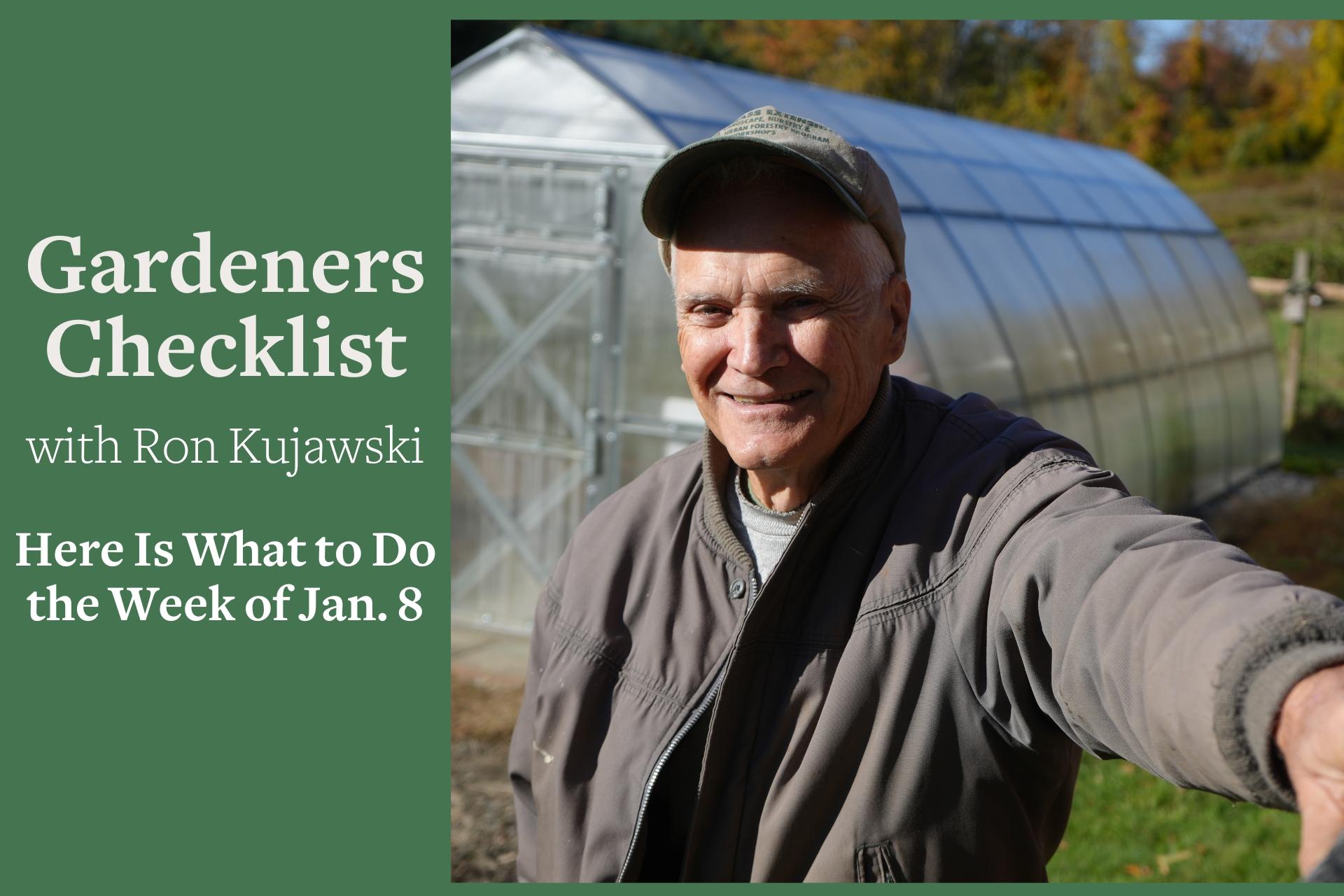You are here
Gardeners Checklist: Here Is What to Do on the Week of Jan. 8
Gardeners Checklist: Here Is What to Do on the Week of Jan. 8
By Ron Kujawski
• Make several shallow slices down the sides of the root ball of pot-bound plants. This will free up tightly bound circling roots. In the worst cases of pot bound plants, also slice an X across the bottom of the root ball. Then gently tease the roots apart before repotting. Always repot in a pot that is an inch or larger in diameter (as measured across the top of the pot) than the original pot.
• Turn houseplants near windows every week or so. Otherwise, the stems will bend toward the light and ruin the symmetry of the plant. Such forlorn plants look as if they are desperate to escape the neglect foisted upon them by an inattentive gardener.
• Spread ashes from the fireplace or wood stove in a thin layer over lawn and garden areas, even if the soil is frozen or snow covered. Wood ash is a good source of potassium, an essential element for the health of turfgrass, trees, and vegetables.
• Dig up some parsnips, rutabagas, and other root crops that are still in the garden under cover of deep mulch.
• Take inventory of seed starting supplies, i.e. sterile soil media, cleaned pots and flats, and supplementary light sources. Oh, don't forget the seeds. Test small lots of leftover seed from previous years to see if they are still viable.
+ + +
A task I typically reserve for winter is pruning tree branches and the occasional felling of a dead tree. This is work that I treat very seriously, not because it is usually a necessary task but because tree work can be a very dangerous exercise. I have had far too many friends, including a few professional arborists, who have been badly injured or worse while trimming or felling trees. Even though I’ve pruned a lot of branches and cut down many trees, there are some things I never do. For one, I never work alone if I have to cut down a large tree; the definition of “large” being any tree that could cause injury if it fell on me.
When using a chainsaw to remove tree limbs, I always keep my feet on the ground and never cut a branch that is above my head. If I have to cut such a branch, I’ll use a pole pruner. Pruning branches while standing on a ladder is an accident waiting to happen. Chainsaws are great tools and make light work of many pruning tasks, but they must be used with extreme caution. I know it’s not cool to read the safety guidelines that come with such equipment, but rushing to the emergency room is even less cool. Cutting large branches high into a tree or felling a very large tree is best left to a licensed and insured professional. Yes, it can be costly to hire out such work, but what is your life worth?
Ron Kujawski began gardening at an early age on his family's onion farm in upstate New York. Although now retired, he spent most of his career teaching at the UMass Extension Service. He serves on Berkshire Botanical Garden’s Horticulture Advisory Committee. His book, Week-by-Week Vegetable Gardener’s Handbook, is available here.
Help Our Garden Grow!
Your donation helps us to educate and inspire visitors of all ages on the art and science of gardening and the preservation of our environment.
All donations are 100 percent tax deductible.



